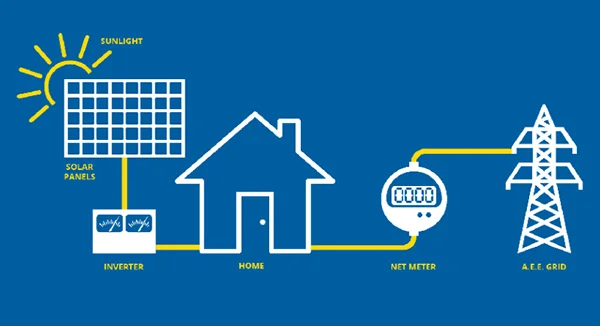By admin / 23 Dec 2020
How Solar Panels Work?
Solar panels work through a photovoltaic process – where radiation energy is absorbed and generates electricity. Radiation energy is absorbed by semiconductor cells – normally silicon – and transformed from photon energy (light) into voltaic (electrical current). When the sun's radiation hits a silicon atom, a photon of light energy is absorbed, ‘knocking off’ an electron. These released electrons create an electric current. The electric current then goes to an inverter, which converts the current from DC (direct current) to AC (alternating current). The system is then connected to the mains power or electricity grid.
Step 1: Sunlight activates the panels.
Step 2: The cells produce electrical current.
Step 3: The electrical energy is converted.
Step 4: The converted electricity powers your home.
Step 5: A net meter measures usage.
form of generation throughout the day. Solar panels don’t generate any noise pollution while generating electricity. These panels are very safe. They're mostly made from silicon sheets, and there's no danger of the photovoltaic cells leaking or emitting any toxins or fumes.
And one more good news is that if you're not at home to use the electricity your solar panels are generating every sunny day and what happens at night when your solar system is not generating power in real-time, you will get the benefit through a system called "net metering."



